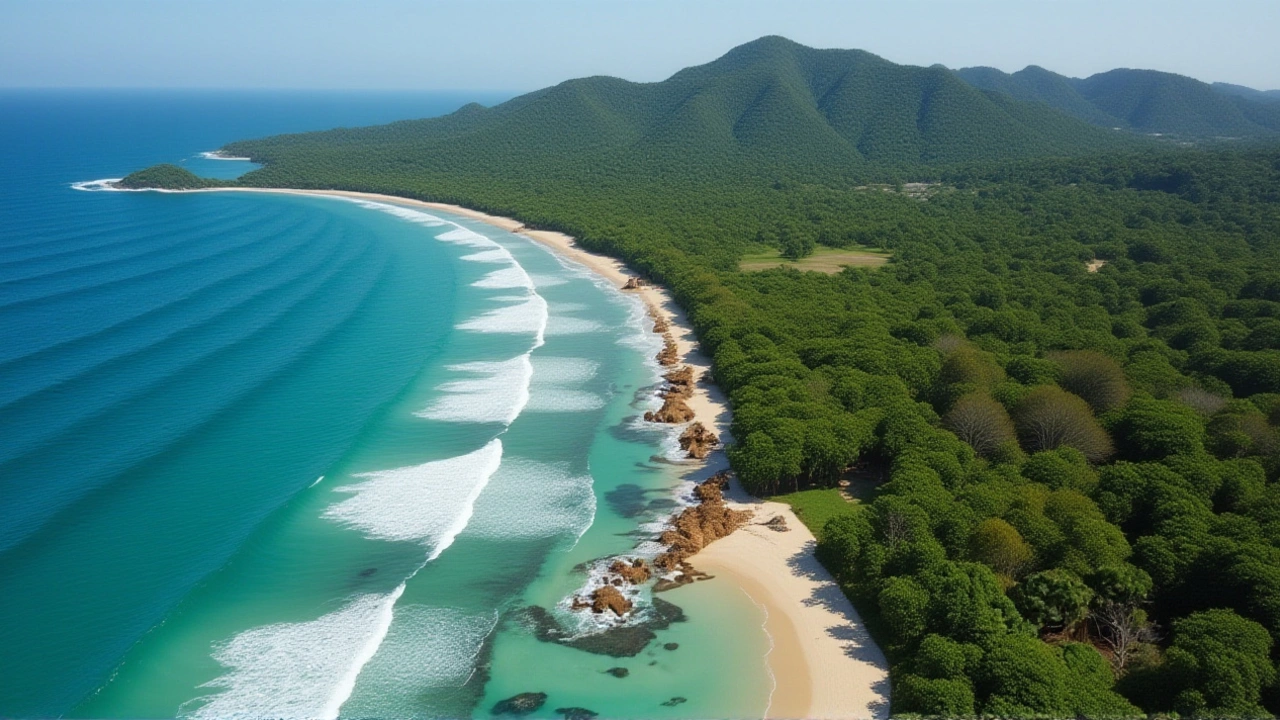When Canada’s Department of Foreign Affairs, Trade and Development updated its travel advisories in late October 2025, it didn’t just tweak a warning—it sent ripples through the winter getaway plans of tens of thousands of Canadians. Costa Rica now sits under a "Exercise a high degree of caution" alert, while Jamaica remains locked in the highest-risk category: "Avoid all travel." The shift isn’t just bureaucratic noise. It’s reshaping airline bookings, hotel occupancy rates, and local economies from the Pacific coast of Central America to the turquoise shores of the Caribbean.
Why Costa Rica’s Advisory Feels Personal
The October 28, 2025 update to Costa Rica’s advisory was unusually detailed. It didn’t just say "crime is up." It named exact locations: the Coca-Cola bus terminal in downtown San José, the central market, Dominical’s beachside cafes, and the quiet lanes near Cahuita. Tourists are being told to check car locks manually—because thieves have been known to pop open unlocked doors while drivers pump gas. The warning against accepting food or drinks from strangers? That’s not paranoia. It’s based on documented incidents of drugged beverages targeting foreign visitors.What’s chilling is the timing. The advisory explicitly notes that theft spikes during peak tourist months: November to May, and again in July and August. That means the very season Canadians flock south for warmth is now the most dangerous. One family from Ottawa, scheduled to leave for Manuel Antonio in December, told a local travel agent: "We paid for a villa with a pool. Now we’re wondering if the pool is worth the risk of losing our passports on the way to breakfast."
Jamaica’s Stark Reality
While Costa Rica’s advisory is a red flag, Jamaica’s "Avoid all travel" status is a full stop. Last updated on November 19, 2025, it reflects more than just crime. It’s tied to lingering instability after Hurricane Melissa—a Category 4 storm that slammed the island in September 2025, leaving infrastructure strained and emergency services overwhelmed. Even now, power outages in rural areas and delayed repairs to key roads are complicating emergency response.Still, the economic pain is real. Air Canada Vacations has already begun contacting customers booked for Jamaica between November 2025 and November 15, 2025. They’re being offered three choices: reschedule, switch destinations, or take a travel credit. No refunds. No exceptions. One customer in Toronto, who had planned a 10-day honeymoon in Montego Bay, said: "They’re being polite. But it feels like they’re telling us our dream vacation is off the table—forever."

The Caribbean’s Silent Crisis
The fallout isn’t limited to Jamaica and Costa Rica. Statistics Canada data shows Canadian outbound travel in early 2025 became erratic—families delayed trips, older travelers canceled, and many opted for shorter, domestic getaways. The result? Aruba, Curaçao, The Bahamas, Trinidad & Tobago, and Saint Lucia all reported double-digit drops in Canadian arrivals.The Bahamas saw a 1.3% decline in first-half air arrivals in 2025—small, but significant for an economy where Canadian tourists account for nearly 20% of winter visitors. Curaçao, meanwhile, is grappling with seasonal seat shortages, not because demand is low, but because airlines are pulling back flights in response to advisory-driven cancellations. "We’ve got the hotels. We’ve got the tours," said a tourism official in Willemstad. "But if Canadians won’t fly here, what’s the point?"
How Advisories Change Behavior—Instantly
Industry analysts from Travel and Tour World say Canadian advisories now act like a switch. "It’s not gradual," one analyst noted. "One day, a family books a package. The next day, the advisory drops, and they call to cancel. No debate. No research. Just panic." This is especially true among older travelers and families with children, who are the most risk-averse and the most likely to have travel insurance.Even destinations with strong cultural offerings, like Trinidad & Tobago—home to Carnival and world-class birdwatching—are seeing bookings evaporate. "We’ve got the events. We’ve got the safety protocols," said a Trinidadian tour operator. "But no one’s reading our press releases. They’re reading Ottawa’s warning."

What’s Next?
The Canadian government has no plans to consolidate its advisories into a single regional warning. Officials insist the tiered system—"Take normal precautions," "High caution," "Avoid non-essential travel," and "Avoid all travel"—is necessary because conditions vary wildly. But critics argue it creates confusion. "Is Jamaica more dangerous than parts of Mexico? Than Honduras? Than certain neighborhoods in Miami?" asks Dr. Lena Ruiz, a tourism policy researcher at the University of Toronto. "The public doesn’t get that. They just see ‘Avoid all travel’ and assume the whole island is a war zone."Meanwhile, Air Canada Vacations has rolled out new protocols. Travelers affected by weather disruptions between February 12–18, 2025, can now modify bookings online without fees. But for advisory-related cancellations? No flexibility. Only options.
The real question isn’t whether the advisories are accurate. It’s whether they’re doing more harm than good. Caribbean nations are watching their winter economies shrink—not because of crime or hurricanes alone, but because of how a government warning, issued thousands of miles away, can instantly freeze a traveler’s heart.
Frequently Asked Questions
Why is Jamaica under "Avoid all travel" while Costa Rica is only "High caution"?
Jamaica’s "Avoid all travel" status stems from a combination of post-Hurricane Melissa infrastructure strain, elevated violent crime rates in certain areas, and ongoing challenges with emergency response capacity. Costa Rica’s advisory focuses on opportunistic crime like theft and assault, which are widespread but not typically lethal. The difference reflects severity, not just volume of incidents.
Are Canadian travel advisories legally binding?
No. Canadians can still travel to any destination, even under "Avoid all travel." But if they do, their government won’t provide consular assistance in most cases, and many travel insurance policies become void. This makes the advisory a powerful deterrent—even without legal force.
How are Caribbean countries responding to the drop in Canadian tourists?
Many are pivoting to markets in Latin America and Europe, while others are launching safety certification programs for hotels and tour operators. Trinidad & Tobago is promoting Carnival with targeted digital campaigns in Brazil and Colombia. Aruba has partnered with Dutch insurers to offer bundled coverage for Canadian travelers who still choose to visit.
What’s the timeline for advisory changes in 2026?
The Canadian government reviews advisories quarterly. The next scheduled update for Jamaica is January 2026, and for Costa Rica, it’s February 2026. Officials say they’re monitoring crime trends, hurricane recovery progress, and airline booking data. But no changes are expected before March 2026 unless a major incident occurs.
Do these advisories affect Canadians traveling with U.S. passports?
No. The advisories only apply to Canadian citizens. However, many U.S. travelers rely on Canadian travel advisories as a trusted source—so even non-Canadians are changing plans. Some U.S. tour operators now include Canadian advisory levels in their risk assessments for all clients, regardless of nationality.
Is there data showing how many Canadians actually ignored these advisories?
Official numbers aren’t public, but anecdotal evidence suggests a small but steady trickle. One border agent in Cancún reported a 12% increase in Canadian passport holders entering Mexico in November 2025—many of whom were flying onward to Jamaica or Costa Rica via ground transport. These travelers often bypass official channels, making them harder to track—and more vulnerable.



